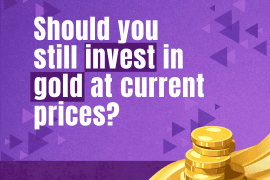I am getting 16% returns on my portfolio.
One of my friends said that. What is wrong with this simple statement?
This statement is fundamentally wrong in many aspects.
One, you got 16% returns till now. You are not guaranteed to receive 16% returns continuously. This statement gives the impression of assurance that similar returns can be expected in the future, which is far from the truth.
In many cases, this 16% also hides some key facts. One being that last year’s returns could be zero, but because earlier years’ returns were high, it averages out.
Another key fact is that these returns could have been achieved by taking excessive risks, which you are not even aware of. It’s not about how much return you got, it’s about how much risk you took to get those returns. And whether you are comfortable with such a level of risk.
Unfortunately, a lot of people don’t know how to evaluate risks in their portfolio, and they feel content with the returns, which are easy to see, whereas risks can be evaluated only by professionals.
The role of a professional investor or advisor is to understand the risks, design the portfolio according to the risk an investor can bear in extreme scenarios, and try to maximize returns at the given level of risk.
Starting with risk assessment is important because one unfortunate day, you will face it, and if that goes beyond your comfort zone, you will panic and exit at the wrong time, thus ending your compounding journey.
The first step is to identify your risk profile and understand the level of risk in your portfolio. Stress test your portfolio in extreme situations like the IT Bubble Burst (2000-2003) and the Subprime Crisis (2008-2009) because such events will happen again in the future. When, how, and with how much intensity, nobody can tell all.
But to survive such disasters, you need to do only one thing: don’t die.
Originally posted on LinkedIn: www.linkedin.com/sumitduseja





